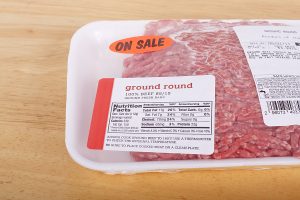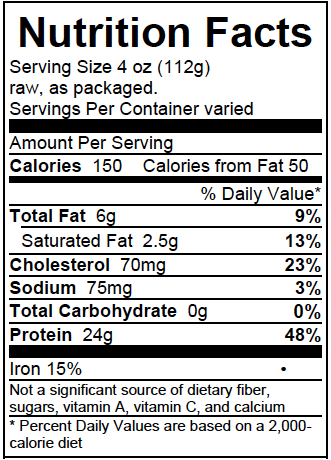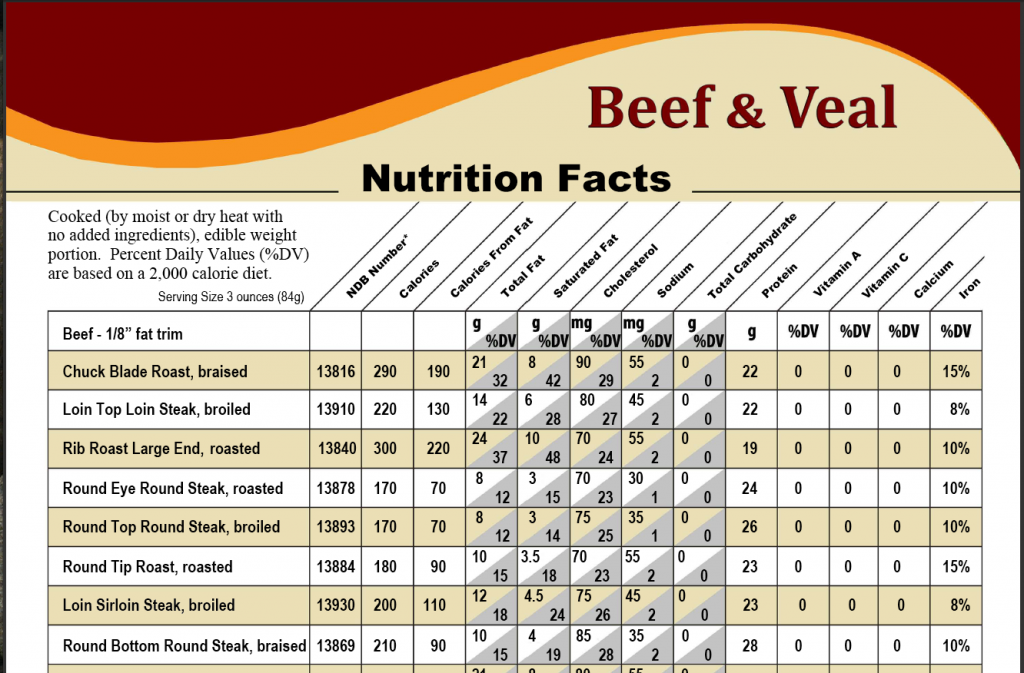 You may already limit red meat and avoid processed meat to lower risk of colorectal cancer per AICR’s recommendation. But do you puzzle over calories, fat or what 85% lean means when trying to choose “lean meat and poultry”? If so, the new meat labeling law may help you out.
You may already limit red meat and avoid processed meat to lower risk of colorectal cancer per AICR’s recommendation. But do you puzzle over calories, fat or what 85% lean means when trying to choose “lean meat and poultry”? If so, the new meat labeling law may help you out.
As of March 1, you’ve been able to see calories and grams of fat in fresh ground meats right on the package. For “major cuts of meat” (meat that isn’t ground), you’ll find the information either on the package or on a poster or brochure near the meat.
What does the label look like?
It looks a lot like the label you see on packaged foods like crackers, bread or canned and frozen foods. You’ll find serving size, calories, calories from fat, total fat, saturated fat, cholesterol, sodium, carbohydrate, protein and iron. Here’s an example of ground beef, 4 oz. raw that is 95% lean/5% fat:

Go here for more information on how to read the nutrition facts label.
What’s on the poster or brochure?
The posters show the same information in a different format. Notice that serving size is based on 3 oz. of cooked meat or poultry and keep in mind that the poster information for chicken and turkey includes skin. Remove skin for lower calories and less fat. Here’s part of the poster for beef and veal:

What’s the best way to use this information?
- Comparison: if you want the leanest meat compare grams of fat per serving. In some cases, the ground beef may actually be lower fat than ground turkey or chicken. Or you may be more concerned about saturated fat so you can compare that. Do you care only about total calories? Compare calories per serving.
- Sodium: some meat and poultry has salt or sodium added, so if you are watching your sodium, it can pay to check out amounts of sodium.
If you buy from a small, local producer or get your meat directly from a farmer, this information is not required to be on the package. And, unfortunately these new labels do not apply to fresh fish or seafood.
Look for healthy poultry, beef or pork recipes in the AICR Test Kitchen and sign-up to receive our weekly Health-e-Recipe.
Have you seen this information in the supermarket? Is it helpful?





